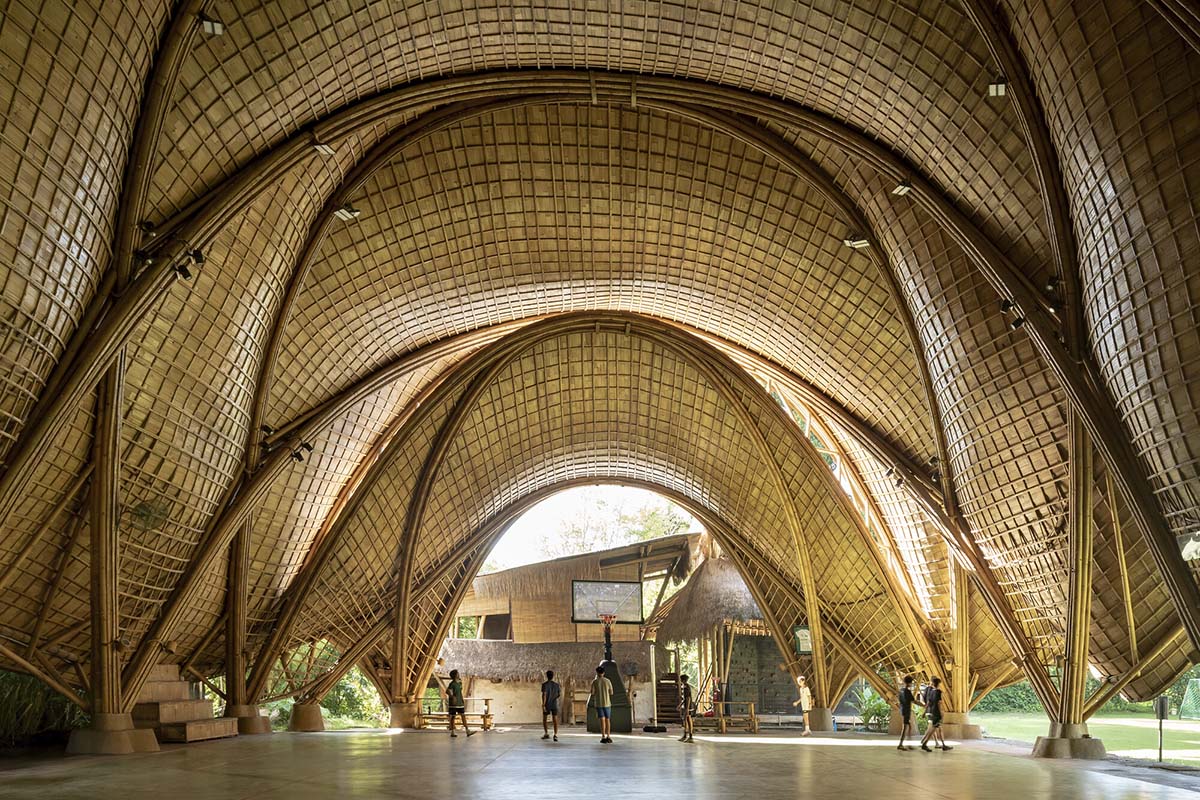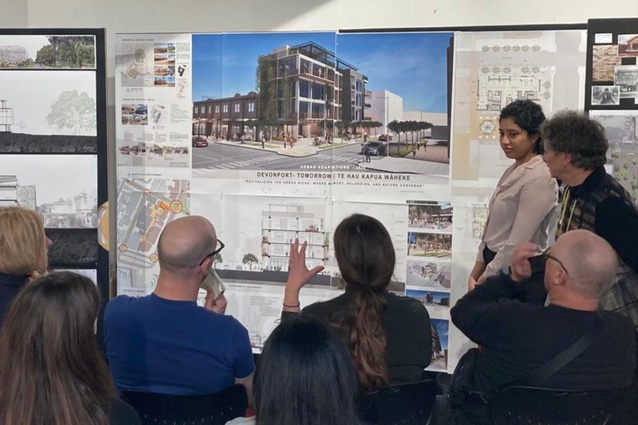8 Best Sateen Sheets for a Polished Bedscape, Tested by AD (2025)
All products featured on Architectural Digest are independently selected by our editors. However, we may receive compensation from retailers and/or from purchases of products through these links.Featured in this articleBest Overall Sateen SheetsBoll & Branch Signature Hemmed Sheet SetFor a Romantic DrapeEttitude CleanBamboo Sheet Set The Affordable PickGood Sleep Bedding Egyptian Cotton Sateen SheetsShow more3 / 8A close cousin to percale and silk, the best sateen sheets offer a happy medium of refinement and softness, all in one durability, and an easy-to-clean fabric.Sateen is known for having a polished appearance because of its lustrous sheen and wrinkle-resistant material. This comes from a tight satin weave that leaves a shiny look without compromising a smooth hand feel. While you can find this bedding in elevated spaces like this vibrant West Village town house thanks to embroidered touches and traditional prints, they’re surprisingly versatile and come in many forms. Here, our editors dive into their favorites for their bedrooms. Since you can find many in higher thread counts though, these are durable enough for any room in the house—as seen in this family-friendly getaway.Inside this ArticleBest Overall Sateen Sheets1/8Boll & Branch Signature Hemmed Sheet SetBoll & Branch caught commerce director Rachel Fletcher’s attention when she was browsing for new sheets for a few reasons. One: The brand makes organic and fair trade sheets: Two: She loves a sateen weave, and the retailer mentioned that this set was their bestseller and she wanted to see what the hype was about. “Boll & Branch claims that these cotton sateen sheets are buttery soft, and I definitely agree,” Fletcher says. “That extra-soft feel paired with the lovely, cooling properties make them feel like the luxury sheets that they are.” Along with an earthy color paletteand thoughtful hem detailing, this set stood out to be our top pick. These do have a higher price point, but as some of the plushest sheets she’s slept on, Fletcher thinks they’re worth it.Specs:Material: 100% organic cottonThread count: N/ASizes: Twin, Twin XL, Full, Queen, King, King With Std. Cases, California King, Split KingColors: 18 colors; 8 printsUpsides & DownsidesUpsidesSustainable materialBreathableOrganic colorwaysDownsidesExpensiveFor a Romantic DrapePhoto: Yelena Moroz AlpertPhoto: Yelena Moroz Alpert2/8Ettitude CleanBamboo Sheet Set “These sheets are buttery—pun intended,” says senior commerce editor Nashia Baker, who has the set in the butter yellow hue and loves the fabric’s delicate yet durable feel. Contributor Yelena Moroz Alpert also has this set and says that the cooling lyocell fabric set takes the bamboo sheets category up a notch. “Somehow they feel substantial but incredibly light and smooth,” she says of this splurge-worthy set. “The site says that the silky-soft sateen weave is comparable to 1,000 thread count cotton—and I believe it. I’ve never touched a baby alpaca, but I imagine that it’s as soft as these sheets.”Specs:Material: 100% CleanBamboo lyocellThread count: 1,000 thread countSizes: Twin, Twin XL, Full, Queen, King, California KingColors: 8Upsides & DownsidesUpsidesPearly appearanceLightweightUltra softDownsidesPriceyThe Affordable Pick3/8Good Sleep Bedding Egyptian Cotton Sateen SheetsDon’t overlook the best Amazon sheets for high-end sateen bedding. Contributor Erika Owen says these are a great option: “After a single night, they became my favorite set, and a few more nights and a wash only locked in this opinion.” She says they’re sumptuous, cool, and durable—and their qualityhasn’t changed after many rounds through the washer and dryer. “I would buy these as a gift for my best friend, if that tells you anything about how much I recommend these,” says Owen. “There’s nothing better than feeling really good as you hit the hay—who doesn’t want a luxury bed situation—and I felt that way every time I dug into these silky sheets. Let it also be known that I’m no stranger to night sweats and these kept me cool every single night.” The finishing touches are the deep pockets and sturdy elastic on the fitted sheet to fit a grand mattress.Specs:Material: 100% Egyptian cottonThread count: 1,000 thread countSizes: Twin, Twin XL, Full, Queen, King, California King, Split KingColors: 13Upsides & DownsidesUpsidesHigher thread countCoolingSturdy after several washesDownsidesSome shoppers found the fabric weightyA Vibrant Print4/8Rifle Paper Co. Peacock Sateen Bed Sheet SetThese are some of the softest bed sheets out there, just take it from Alpert. Not only are they comfortable to sink into night after night thanks to the plush 300 thread count, but they also veer away from traditional patterns and solid colorways. “I was originally drawn to the peacock print because it is just so whimsical and livens up my guest bedroom,” Alpert says. “But these are also buttery soft. Maybe too soft—my guests never want to leave.” If it wasn’t for the true-to-Rifle print, she would mistake these for hotel sheets because of their supple feel.Specs:Material: 100% combed cotton sateenThread count: 300 thread countSizes: Twin, Full, Queen, KingColors: 3Upsides & DownsidesUpsidesUnique patternsSuppleAiry materialDownsidesNot as ideal for minimalistsClassic Core Set5/8Brooklinen Luxe Sateen Core Sheet SetIf you want sheets with unparalleled quality, durability, and softness that gets better with every wash, multiple AD staff members say you can’t go wrong with these Brooklinen sheets. Fletcher shares that this sateen set is “super classic, smooth, and has a crisp feel.” Sleepers with sensitive skin will also be happy to know that they’re “not at all scratchy or harsh on my skin, like some of the less expensive options I’ve tried in the past,” Fletcher adds.Specs:Material: 100% long-staple cottonThread count: 480 thread countSizes: Twin, Twin XL, Full, Queen, King, California KingColors: 22Upsides & DownsidesUpsidesStructured fabric like a press shirtWrinkle-free designAffordableDownsidesLimited-edition colors sell out fastMore AD-Approved Sateen Sheets6/8Hill House Home Fitted Sheet“For a top sheet and fitted sheet, I truly didn’t know what to expect from a brand as new to the decor game as Hill House Home, but was delightfully surprised at the quality and attention to detail that was put into making these products,” contributor Katarina Kovac says of these Hill House Home sheets.“I wanted something that was crisp yet elevated, and the colored trim in the Savile Sheets was my answer.” Since she’s had her fair share of sheets that have a sandpaper-like texture, she paid close attention to how well these felt after the first wash. To her delight, these “felt soft, velvety, and breathable against my skin, leaving me truly struggling to get out of bed in the morning.”Specs:Material: 100% brushed cotton sateenThread count: N/ASizes: Twin, Full, Queen, King, California KingColors: 6Upsides & DownsidesUpsidesTraditional printsLushSmooth feelThoughtful trimDownsidesFlat sheet, fitted sheet, and pillowcases are sold separately7/8Homebird Sateen Fitted SheetsFletcher loves an ethically made, slippery sateen weave, and it took just one night of sleep to be sold on this Homebird set. “They’re very high quality and everything you want in a sateen sheet: incredibly soft to the touch and slightly silky, with a sturdiness to them that you can tell is the result of a high thread count,” she says. “They fit my bed perfectly and also have the most useful feature that, in my opinion, every set of sheets ever made should have: a long-side and short-side label.”Specs:Material: 100% GOTS-certified, long-staple organic cottonThread count: 300 thread countSizes: Full, Queen, KingColors: 7Upsides & DownsidesUpsidesSilky smoothHelpful labels to make the bedDeep pocketsDownsidesOnly available in muted tones
#best #sateen #sheets #polished #bedscape
8 Best Sateen Sheets for a Polished Bedscape, Tested by AD (2025)
All products featured on Architectural Digest are independently selected by our editors. However, we may receive compensation from retailers and/or from purchases of products through these links.Featured in this articleBest Overall Sateen SheetsBoll & Branch Signature Hemmed Sheet SetFor a Romantic DrapeEttitude CleanBamboo Sheet Set The Affordable PickGood Sleep Bedding Egyptian Cotton Sateen SheetsShow more3 / 8A close cousin to percale and silk, the best sateen sheets offer a happy medium of refinement and softness, all in one durability, and an easy-to-clean fabric.Sateen is known for having a polished appearance because of its lustrous sheen and wrinkle-resistant material. This comes from a tight satin weave that leaves a shiny look without compromising a smooth hand feel. While you can find this bedding in elevated spaces like this vibrant West Village town house thanks to embroidered touches and traditional prints, they’re surprisingly versatile and come in many forms. Here, our editors dive into their favorites for their bedrooms. Since you can find many in higher thread counts though, these are durable enough for any room in the house—as seen in this family-friendly getaway.Inside this ArticleBest Overall Sateen Sheets1/8Boll & Branch Signature Hemmed Sheet SetBoll & Branch caught commerce director Rachel Fletcher’s attention when she was browsing for new sheets for a few reasons. One: The brand makes organic and fair trade sheets: Two: She loves a sateen weave, and the retailer mentioned that this set was their bestseller and she wanted to see what the hype was about. “Boll & Branch claims that these cotton sateen sheets are buttery soft, and I definitely agree,” Fletcher says. “That extra-soft feel paired with the lovely, cooling properties make them feel like the luxury sheets that they are.” Along with an earthy color paletteand thoughtful hem detailing, this set stood out to be our top pick. These do have a higher price point, but as some of the plushest sheets she’s slept on, Fletcher thinks they’re worth it.Specs:Material: 100% organic cottonThread count: N/ASizes: Twin, Twin XL, Full, Queen, King, King With Std. Cases, California King, Split KingColors: 18 colors; 8 printsUpsides & DownsidesUpsidesSustainable materialBreathableOrganic colorwaysDownsidesExpensiveFor a Romantic DrapePhoto: Yelena Moroz AlpertPhoto: Yelena Moroz Alpert2/8Ettitude CleanBamboo Sheet Set “These sheets are buttery—pun intended,” says senior commerce editor Nashia Baker, who has the set in the butter yellow hue and loves the fabric’s delicate yet durable feel. Contributor Yelena Moroz Alpert also has this set and says that the cooling lyocell fabric set takes the bamboo sheets category up a notch. “Somehow they feel substantial but incredibly light and smooth,” she says of this splurge-worthy set. “The site says that the silky-soft sateen weave is comparable to 1,000 thread count cotton—and I believe it. I’ve never touched a baby alpaca, but I imagine that it’s as soft as these sheets.”Specs:Material: 100% CleanBamboo lyocellThread count: 1,000 thread countSizes: Twin, Twin XL, Full, Queen, King, California KingColors: 8Upsides & DownsidesUpsidesPearly appearanceLightweightUltra softDownsidesPriceyThe Affordable Pick3/8Good Sleep Bedding Egyptian Cotton Sateen SheetsDon’t overlook the best Amazon sheets for high-end sateen bedding. Contributor Erika Owen says these are a great option: “After a single night, they became my favorite set, and a few more nights and a wash only locked in this opinion.” She says they’re sumptuous, cool, and durable—and their qualityhasn’t changed after many rounds through the washer and dryer. “I would buy these as a gift for my best friend, if that tells you anything about how much I recommend these,” says Owen. “There’s nothing better than feeling really good as you hit the hay—who doesn’t want a luxury bed situation—and I felt that way every time I dug into these silky sheets. Let it also be known that I’m no stranger to night sweats and these kept me cool every single night.” The finishing touches are the deep pockets and sturdy elastic on the fitted sheet to fit a grand mattress.Specs:Material: 100% Egyptian cottonThread count: 1,000 thread countSizes: Twin, Twin XL, Full, Queen, King, California King, Split KingColors: 13Upsides & DownsidesUpsidesHigher thread countCoolingSturdy after several washesDownsidesSome shoppers found the fabric weightyA Vibrant Print4/8Rifle Paper Co. Peacock Sateen Bed Sheet SetThese are some of the softest bed sheets out there, just take it from Alpert. Not only are they comfortable to sink into night after night thanks to the plush 300 thread count, but they also veer away from traditional patterns and solid colorways. “I was originally drawn to the peacock print because it is just so whimsical and livens up my guest bedroom,” Alpert says. “But these are also buttery soft. Maybe too soft—my guests never want to leave.” If it wasn’t for the true-to-Rifle print, she would mistake these for hotel sheets because of their supple feel.Specs:Material: 100% combed cotton sateenThread count: 300 thread countSizes: Twin, Full, Queen, KingColors: 3Upsides & DownsidesUpsidesUnique patternsSuppleAiry materialDownsidesNot as ideal for minimalistsClassic Core Set5/8Brooklinen Luxe Sateen Core Sheet SetIf you want sheets with unparalleled quality, durability, and softness that gets better with every wash, multiple AD staff members say you can’t go wrong with these Brooklinen sheets. Fletcher shares that this sateen set is “super classic, smooth, and has a crisp feel.” Sleepers with sensitive skin will also be happy to know that they’re “not at all scratchy or harsh on my skin, like some of the less expensive options I’ve tried in the past,” Fletcher adds.Specs:Material: 100% long-staple cottonThread count: 480 thread countSizes: Twin, Twin XL, Full, Queen, King, California KingColors: 22Upsides & DownsidesUpsidesStructured fabric like a press shirtWrinkle-free designAffordableDownsidesLimited-edition colors sell out fastMore AD-Approved Sateen Sheets6/8Hill House Home Fitted Sheet“For a top sheet and fitted sheet, I truly didn’t know what to expect from a brand as new to the decor game as Hill House Home, but was delightfully surprised at the quality and attention to detail that was put into making these products,” contributor Katarina Kovac says of these Hill House Home sheets.“I wanted something that was crisp yet elevated, and the colored trim in the Savile Sheets was my answer.” Since she’s had her fair share of sheets that have a sandpaper-like texture, she paid close attention to how well these felt after the first wash. To her delight, these “felt soft, velvety, and breathable against my skin, leaving me truly struggling to get out of bed in the morning.”Specs:Material: 100% brushed cotton sateenThread count: N/ASizes: Twin, Full, Queen, King, California KingColors: 6Upsides & DownsidesUpsidesTraditional printsLushSmooth feelThoughtful trimDownsidesFlat sheet, fitted sheet, and pillowcases are sold separately7/8Homebird Sateen Fitted SheetsFletcher loves an ethically made, slippery sateen weave, and it took just one night of sleep to be sold on this Homebird set. “They’re very high quality and everything you want in a sateen sheet: incredibly soft to the touch and slightly silky, with a sturdiness to them that you can tell is the result of a high thread count,” she says. “They fit my bed perfectly and also have the most useful feature that, in my opinion, every set of sheets ever made should have: a long-side and short-side label.”Specs:Material: 100% GOTS-certified, long-staple organic cottonThread count: 300 thread countSizes: Full, Queen, KingColors: 7Upsides & DownsidesUpsidesSilky smoothHelpful labels to make the bedDeep pocketsDownsidesOnly available in muted tones
#best #sateen #sheets #polished #bedscape

















